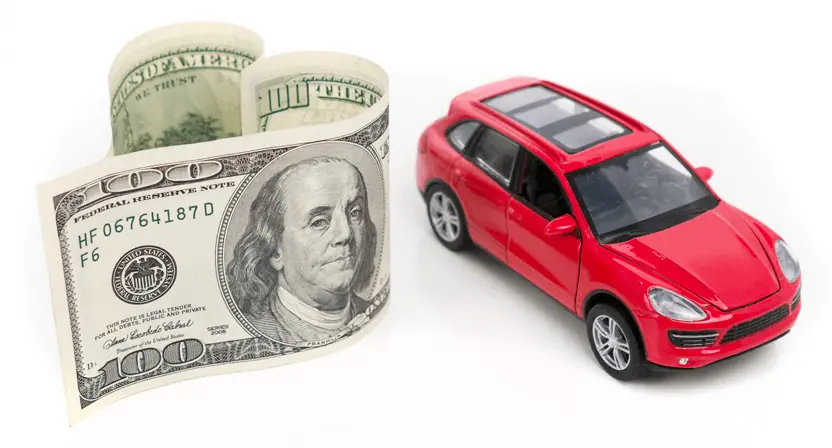The value of your car isn't the only determining factor. Learn more about the many other variables that come into play when shopping for full coverage auto insurance and tips for controlling your costs.
What Is Accident Forgiveness?
Lately, many auto insurance companies have been gaining more customers by offering a unique incentive: accident forgiveness. When a driver gets into an accident, it’s often the case that their premiums go up. For people that have experienced this, accident forgiveness is an excellent way to save some money.
Find Cheap Full Coverage Auto Insurance
Accident Forgiveness: The Basics
Accident forgiveness is a part of a car insurance policy that allows the company to “forgive” an accident you’ve had. The insurance company uses accident forgiveness to protect your driving record.
Accident forgiveness is used on “at-fault” accidents. Normally if you are in an at-fault accident, it would signal to the insurance company that you are somehow an unsafe driver. This would automatically trigger an increase in your auto insurance policy’s premium the next time it is renewed.
However, if you have an auto insurance plan with accident forgiveness, a rates increase is not always triggered.
When Can Someone Use Accident Forgiveness?
Accident Forgiveness is usually only reserved for a person’s first at-fault accident. And as a side note, not every at-fault accident qualifies for accident forgiveness. Each insurance company also has their own standards as to what they are willing to forgive. It’s important to understand what is meant by at-fault.
What is an At-Fault Accident?
An at-fault accident, in a very general sense, is an accident that you are considered to have caused. Just because you got a ticket after an accident doesn’t mean that you are at-fault.
You can be considered at-fault if you either did something you shouldn’t have or if you failed to act to stop an accident. Consider these examples:
- Merging Into a Lane – Say the lane you’re driving in is merging into an adjacent lane. Your mirror is clear, but you fail to check your blind spot and clip a driver in that lane. They may have been driving in your “blind spot,” but your action caused your car to collide with their car. You’re at-fault.
- Driving Through an Intersection – You stop at a stop sign, then continue through the intersection. You’ve failed to read that cross traffic does not stop. As you drive through the intersection, you’re struck by cross traffic. Because you drove into the intersection, you caused the accident and are at-fault.
- Driving in Heavy Traffic – You’re driving in your lane in bumper-to-bumper traffic. You’re following all rules of the road when the car in front of you slams on the breaks. Without enough time to stop, you rear end them. Most precincts would find you at-fault even though the other motorist slammed on the breaks.
This is just a small idea of what qualifies as an at-fault accident. If the police or insurance company consider you “51%” having caused the accident, then you are at fault.
How Do I Qualify for Accident Forgiveness?
Many of the larger insurance companies, and even some smaller ones, offer first accident forgiveness. So, the first thing to do is check that your insurance company has an accident forgiveness program.
Next, you need to know that your insurance agent will check your driving record. If you have had accidents or many speeding tickets in the last few years, you’re probably out of luck. Not to worry though, you can work on cleaning up your driving record by using safer driving practices.
If you don’t qualify for accident forgiveness, you may look into other discounts. Many insurance companies do offer additional discounts like multi-car discounts, defensive driver course discounts or even safety equipment discounts. If your driving record will not allow you to receive accident forgiveness, talk to your insurance agent about qualifying for other discounts.
Is Accident Forgiveness a Good Fit for Me?
You might think that accident forgiveness sounds fantastic. If you’re a driver with a clean record, should you still be considering accident forgiveness?
Some insurance companies offer accident forgiveness only for upgraded insurance plans. For example, Allstate only offers accident forgiveness after upgrading to their Gold or Platinum plans. This means that you will be paying more money overall for your premiums. If you never get in an accident, you may be paying more money for nothing. If you do have accidents, the insurer can also choose to drop your coverage.
Each insurance company also has different rules about how they apply accident forgiveness. Be sure to ask your agent about when accident forgiveness will kick in. Some companies can enroll you in accident forgiveness from day one, while others can make you wait as long as five years!
If you really want to compare rates, you can ask your insurer for their surcharge schedule and crunch the numbers yourself!
Use Your Driving Record to Your Advantage
Accidents are unpredictable. With a clean driving record, you can save big money by enrolling in a plan with accident forgiveness. If you’re ready to enroll for accident forgiveness, contact us today to learn about your options and find cheap insurance.


